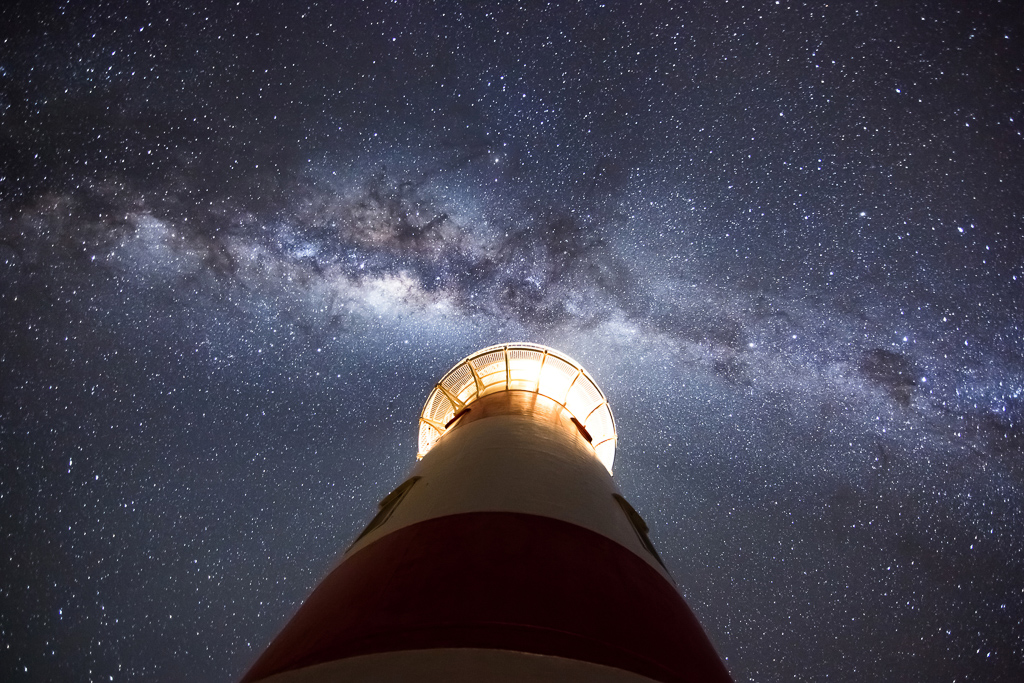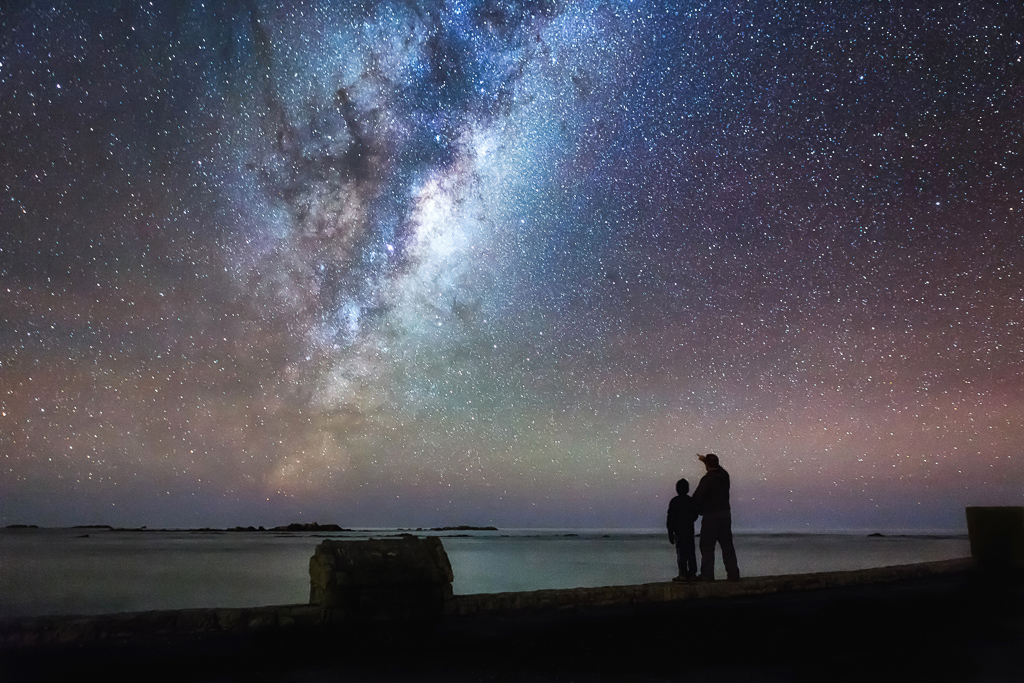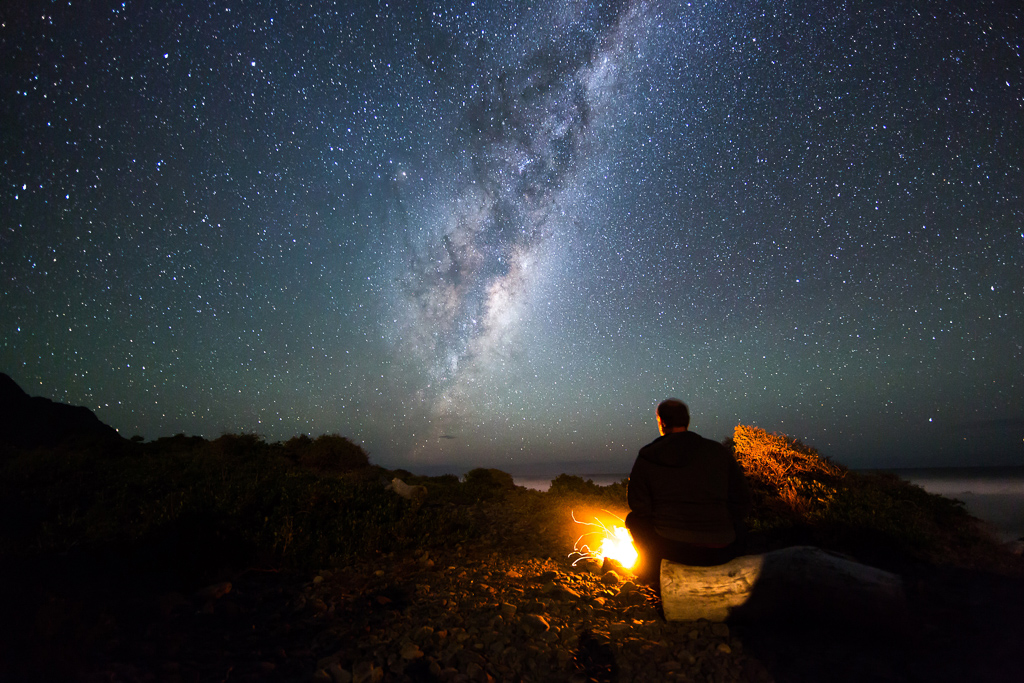Astrophotographer Mark Gee has always been fascinated by the mysteries of the night skies, even as a child. Based in New Zealand, home to some of the darkest skies in the world, the galaxies make up his universe.

EOS 6D, EF24-70mm f/2.8L USM, f/2.8, 25mm, 30.0secs, ISO6400
The Tasman Valley in the Aoraki/Mount Cook National Park, New Zealand
‘My astrophotography journey so far has been incredible. It’s a journey where you get to learn about yourself and your craft, as well as the night sky above,’ says Mark, ‘it would also be one of the most frustrating forms of photography as there are many obstacles to overcome to get the perfect shot.’ The astrophotographer usually spends hours alone under the starry sky, venturing to the darkest and most remote locations he can find, preferably areas with very little light pollution. ‘New Zealand is great for this, and we even have the Aoraki Mackenzie International Dark Sky Reserve on the South Island,’ he says, ‘this reserve is gold rated in recognition of the quality of the almost light-pollution-free skies of the region.’

EOS 6D, EF14mm f/2.8L II USM, f/4.0, 14mm, 30.0secs, ISO3200
The Church of the Good Shepherd on the shores of Lake Tekapo in New Zealand
Location aside, knowing the right time to shoot is equally important. ‘Two weeks either side of the new moon period is the best time to shoot astrophotography. If the moon is in the sky, it will wash a lot of the details out of the shot, especially the nebulosity and details of the Milky Way,’ Mark advises. The Milky Way season in the southern hemisphere – perfect for photographing the Galactic Center – spans from mid-February to mid-November.
To get the perfect shot, there are many things an astrophotographer has to keep in mind. Long exposure shot means using a cable release or the camera’s built-in timer to minimise unwanted vibration. ‘Shoot with everything on manual – and that includes manual focus,’ says Mark, ‘use the live view mode where you point your camera at the brightest star in the sky and magnify your live view on the back of your LCD screen as much as you can. Rotate your focus ring until the star is pin sharp, and then you have your focus set.’

EOS 5D Mark III, EF14mm f/2.8L II USM, f/2.8, 14mm, 30.0secs, ISO3200
Cape Palliser Lighthouse on the North Island of New Zealand as The Milky Way hangs high overhead
Even though Mark has never sighted any UFOs during his night adventures (a question he’s been asked plenty of times), he has come across a seal which refused to leave, got shot at by hunters, and freaked out by mating penguins whose screeches sounded more brutal than one would imagine. Mark is fascinated by all things astrophotography, but the biggest mind-boggling fact to him remains the Milky Way. ‘The bright galactic core of the Milky Way is actually around 27,000 light years from Earth. This means the light you are now capturing from the Milky Way on your camera actually left its core during the late stone age period here on Earth,’ he marvels.

EOS 6D, EF24-70mm f/2.8L USM, f/3.2, 24mm, 30.0secs, ISO3200
Universal Bonding: A short road trip to New Zealand's South Island with my son
How does a day in Mark’s life look like? To capture the perfect shot, his day starts as early as two in the afternoon.
2 P.M.
After lunch I head out to the Wellington South Coast. I’m planning on shooting a composition I haven’t shot before, so I want to get it right in the daytime first before setting up at night.
2.30 P.M.
On my way out to the location I notice a lot of storm damage to the 4WD track I have to travel on. I get to a part of the track where there has been a wash out but, determined to get to my destination, I push forward only to find myself bogged in the soft sand.
3 P.M.
After trying to dig myself out, another 4WD vehicle arrives and luckily he has a tow rope on board. He lectures me about driving out on the South Coast after a southerly storm and tows me out. I give him $20 for his troubles and venture on to the location.
3.45 P.M.
I arrive at the location and find a lot of erosion and debris strewn across my planned composition. I spend a good 15 minutes setting up and attempting to get my composition right, before deciding it’s not going to work due to the debris breaking up my leading lines. I opt for another angle to find something that works.
4.30 P.M.
I look to the south and notice a band of clouds heading my way. This is one of the most frustrating things about astrophotography, you can get all set up and weather can simply come along and totally ruin your night. Still, I’m optimistic and relying on the fine weather forecast.
5.15 P.M.
I arrive back home and check the weather forecast again. The forecast says fine with light winds, but the view outside my window is saying otherwise. I still have over four hours until shoot time, so I’m hoping the clouds clear by then.
5.30 P.M
I check and double check my equipment that I’m taking with me, and put the camera battery on charge to top it up. Tonight I’ll be shooting a time-lapse video, so I’ll be taking the following equipment:
Canon EOS 6D
Canon EF14mm f/2.8L II USM lens
Carbon Fibre Tripod with a Syrp Ballhead
Syrp Genie Motion Control Unit for driving the time-lapse
Syrp Magic Carpet Slider for the Syrp Genie to run on
Dew-Not Lens Warmer to prevent condensation on the lens
A 12-volt power supply to power the lens warmer
6.00 P.M.
I check the weather forecast again, which still says fine, but the cloud cover is heavy now. I decide to get some rest before I get ready to head back out to the location again.
7.30 P.M
It’s dark now and I get dressed in warm clothes and pack my gear into the car, which includes a blow up mattress in the back so I can get some rest while the time-lapse is running. I order a pizza for take-out from my favourite local pizza shop.
7.45 P.M.
I jump in the car and head to the location from the pizza shop. I’m a little nervous, as I know I have to navigate that bad section of track again and don’t want to get bogged down like I did earlier today.
8.15 P.M.
I get to the bad section of the track, stop with my headlights on and get out to walk it first. After I’m satisfied I can get through it, I drive a little more aggressively, in low gear this time, and make it through to the other side.
8.30 P.M.
I arrive at the location – there is still a bit of cloud hanging around, but it is definitely clearing. I eat my pizza under the stars before I begin the set up.
9.00 P.M.
It is about 45 minutes before shoot time, so I begin to set up the time-lapse. By this stage the sky is almost totally clear, so I’m quite relieved and excited about getting some good time-lapse footage.

EOS 6D, EF24-70mm f/2.8L USM, f/2.8, 24mm, 25.0secs, ISO6400
The Wainuamata coast near Wellington, New Zealand is rugged and exposed, but also very picturesque
9.30 P.M
After spending a good amount of time setting up the time-lapse and doing some test shots, I’m ready to begin shooting. I’ve set the time-lapse to run for 3.5 hours which will give me just over 15 seconds of footage.
9.40 P.M.
After last minute checks, the Milky Way is just about positioned in the right part of the sky for my composition and I’m ready to set the time-lapse off. I press the start button on the Syrp Genie, which in turn fires my first exposure on the Canon EOS 6D. I wait a few minutes to make sure the time-lapse is all working ok, and then head back to my car to wait it out.

EOS 5D Mark III, EF14mm f/2.8L II USM, f/2.8, 14mm, 30.0secs, ISO3200
Camping Under the Stars
9.45 P.M.
I set up the bed in the back of my car, but spend a good 10 minutes outside first just looking up at the stars.
10.00 P.M.
I get into the back of my car to get some rest, and set my alarm for 1am so I can wake up and hopefully the time-lapse will be almost finished.
1.00 A.M.
My alarm wakes me and I hop out of the car. The night is stunning right now, and the night sky has moved quite a bit since I went to bed. I can see the red light on the back of the camera still on which means the time-lapse is still going, but I walk down to the set up to wait until it finishes.
1.12 A.M.
The time-lapse fires its last exposure and then it’s done. I carefully turn all the gear off first to make sure I don’t corrupt anything, and then begin to disassemble the equipment.

EOS 6D, EF14mm f/2.8L II USM, f/2.8, 14mm, 30.0secs, ISO6400
The Galactic Core of the Milky Way rises to the east, silhouetting and an old fishing boat that ran aground in a storm
1.20 A.M.
I pack all the gear into the back of the car, and turn the camera on one last time to check the images on the LCD. As I scrub through the images, I can see I have successfully captured a good time-lapse. I turn the camera off, put it in the bag, get in the car and start heading home.
2.00 A.M.
I pull into my garage and begin unpacking the car. Once I get everything inside, I start to import the images from the time-lapse into Lightroom on my computer. Everything looks great, but I’m not going to sit down and process anything just yet. I usually wait for at least the next day to do that.
2.40 A.M.
Totally shattered after a long day of planning and shooting, I head to bed for the rest of the night.
Receive the latest updates on photography news, tips and tricks by signing up with us!
Photographer Profile

Mark Gee
Mark Gee is an award winning photographer and time-lapse filmmaker based in Wellington, New Zealand. Wholly self-taught, Mark ventures out to the darkest, most remote locations all around the country, enjoying the challenge of combining New Zealand’s striking landscapes with the ethereal beauty of the night sky in new, creative ways.
His short film, ‘Full Moon Silhouettes’ gained him international acclaim after going viral online, and in 2013, Mark won the prestigious Astronomy Photographer of the Year. Not only did he win it overall, but Mark also won the Earth and Space category, and the People and Space category which had never been done before in the competition's history.

































